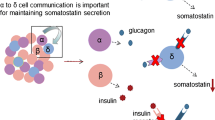Abstract
The role of glycogen content in the heart for the development of isoprenaline-induced myocardial lesions (IML) was studied in Wistar rats and in two inbred rat strains: In IR rats (resistant to the development of IML) and in IS rats (sensitive to IML development).
Glycogen content in the heart can be dramatically lowered or increased by various interventions. IML develop during the period of very low heart glycogen content (about 0.6 mg.g−1) induced by isoprenaline administration. In animals with increased resistance to IML, either due to genetic factors or induced by isoprenaline pretreatment a high glycogen content in the heart is found (up to 7.5 mg.g−1).
The increase of resistance to IML development and increased glycogen content induced by isoprenaline pretreatment were accompanied by lower basal or ISO-, guanylylimidodiphosphate- (Gpp/NH/p) and forskolin-stimulated activities of adenylyl cyclase. On the other hand, these parameters did not differ between IR and IS rats in spite of the presence of significant differences in the resistance to the development of IML and in heart glycogen content in these two rats strains.
These results suggest that genetically determined differences between two inbred rat strains in the resistance of the heart to the development of IML and in the heart glycogen content are caused by factors which are independent of the receptor-adenylyl cyclase complex and are therefore different from those involved in the increase of resistance and glycogen content due to isoprenaline pretreatment.
Similar content being viewed by others
References
Scheuer J, Stezoski W: Protective role of increased myocardial glycogen stores in cardiac anoxia in the rat. Circ Res 27: 835–849, 1980
Braunwald N: The glucose-insulin-potassium (GIK) regimen in the treatment of myocardial ischemia. Circulation 48: 459–462, 1973
Hearse DJ, Steward DA, Brainbridge MV: Myocardial protection during ischemic cardiac arrest. J Thorac Cardiovasc Surg 76: 16–23, 1978
Corr PB, Gross RW, Sobel BE: Arrhytmogenic amphiphilic lipid and the myocardial cell membrane. J Mol Cell Cardiol 14: 619–626, 1982
Vik-Mo H, Mjos OD: Influence of free fatty acids on myocardial oxygen consumption and ischemic injury. Am J Cardiol 48: 361–365, 1981
Lopaschuk GD, Wampolt RB, Barr RL: An imbalace between glycolysis and glucose oxidation is a possible explanation for the detrimental effects of high levels of fatty acids during aerobic reperfusion of ischemic hearts. J Pharmacol Exp Therap 264: 135–144, 1993
Mráz M, Keen V, Kršiaková D, Vrana A, Hynic S: The role of myocardial glycogen content for the development of isoprenaline-induced myocardial lesions in different inbred strains of rats. Basic Res Cardiol 90:467–474, 1995
Mráz M, Faltová E, Lincová D, Šedivý J, Gaier N, Mühlbachová E, Černohorský M, Vrana A: Genetic differences in the resistance of rats to isoprenaline-induced heart lesions. Basic Res Cardiol 81: 74–82, 1986
Hynie S: Membrane Receptors and Transmembrane Signalling. Rozpravy Československé Akademie ved 100(6), Academia Praha, 1990
Carrol NV, Longley RW, Roe JH: The determination of glycogen in liver and muscle by use of anthrone reagent. J Biol Chem 220: 883–893, 1956
Mráz M, Faltová E, Šedivý J, Protivovd L, Pilný J: Quantitative evaluation of the development of isoprenaline-induced heart lesions. Physiol Bohemoslov 29: 323–331, 1980
Prather JW, Russel RO, Mantle JA: Metabolic consequences of glucose-insulin-potassium infusion in treatment of acute myocardial infarction. Am J Cardiol 38: 95–99, 1976
Opie LH: The mechanism of myocyte death in ischaemia. Eur Heart J: 14 Suppl. G: 31–33, 1993
Faltová E, Mráz M, Sedivy J: Protective effects of isoprenaline pretreatment on the cardiotoxicity of the same drug. Physiol Bohemoslov 32:307–318, 1983a
Faltova E, Pařízková J, Mráz M, Šedivý J, Špatová M: Influence of motor activity on the development of isoprenaline-induced heart lesions. Physiol Bohemoslov 32: 203–209, 1983b
Author information
Authors and Affiliations
Rights and permissions
About this article
Cite this article
Mraz, M., Hynie, S. Heart glycogen content and isoprenaline-induced myocardial lesions. Mol Cell Biochem 163, 145–149 (1996). https://doi.org/10.1007/BF00408651
Issue Date:
DOI: https://doi.org/10.1007/BF00408651




